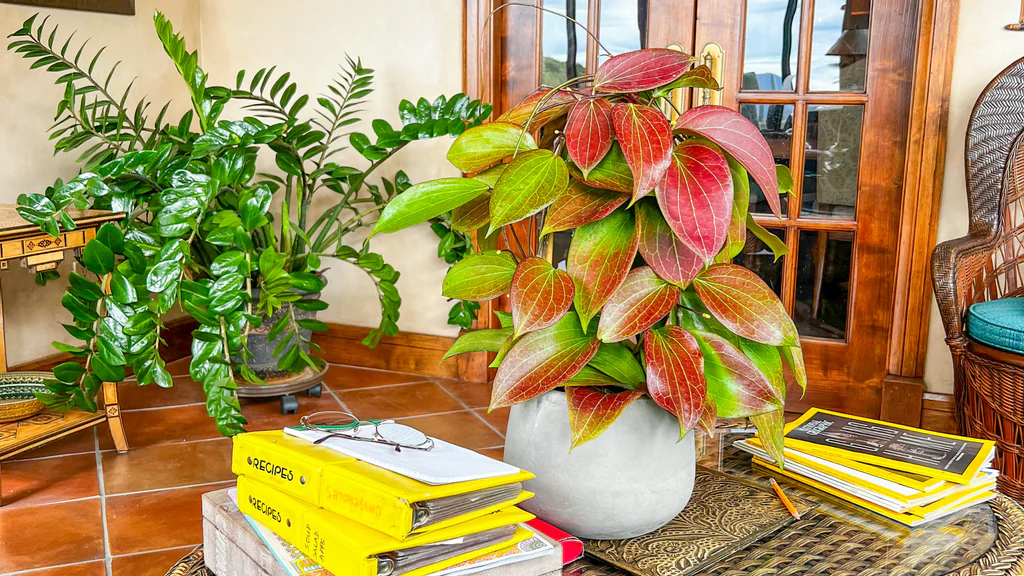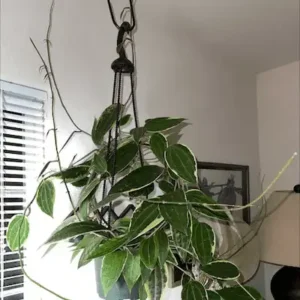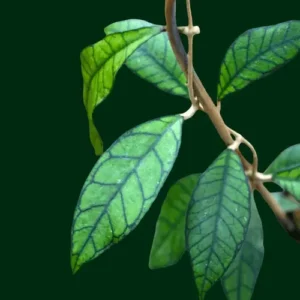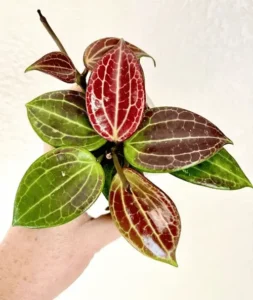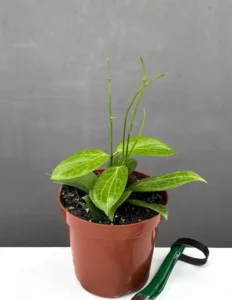Introduction
In a fascinating world of succulent hoyas, a particularly intriguing plant is the Hoya, often referred to as the wax plant due to its glossy, thick leaves and fragrant flowers. In this article, we’ll delve deep into the fascinating world of succulent hoyas, covering everything from their characteristics and care to the varieties that enthusiasts love. Native to tropical and subtropical regions of Asia and Australia, Hoyas are both ornamental and low-maintenance, making them an ideal choice for both novice and experienced gardeners alike.
Origin and Natural Habitat of Succulent Hoyas
The Hoya genus includes around 200–300 species, primarily found in Southeast Asia, India, China, Australia, and the Pacific islands. In their natural habitat, these plants are often epiphytic, meaning they grow on trees or other plants, absorbing nutrients from the air, rain, and organic debris. This ability to thrive with limited soil and in varying environments makes Hoyas particularly adaptable as houseplants.
Most Hoyas are climbers or trailers, which gives them a versatile aesthetic in home settings. In tropical rainforests, they flourish in the canopy, benefiting from bright, indirect sunlight. Recreating this environment indoors is key to their successful growth and blooming which is related to a fascinating world of succulent hoyas.
Physical Characteristics of Succulent Hoyas
The most distinguishing features of Hoya plants are their waxy leaves and star-shaped flowers. Here’s a closer look at each. These characteristics represent a fascinating world of succulent hoyas.
Leaves:
Distinct Features
The leaves of Hoya plants are typically thick, fleshy, and wax-like, which is where the nickname “wax plant” originates. These leaves can vary significantly depending on the species, with some having small, round leaves and others displaying long, narrow, or heart-shaped foliage. The waxy coating on the leaves helps the plant retain moisture, making it drought-tolerant.
Flowers
Distinct Features
Perhaps the most captivating aspect of the Hoya (plant) is its fragrant, star-shaped flowers. These blooms often grow in clusters and come in a range of colors including white, pink, yellow, and red. Many species produce nectar, which adds to the overall allure of the plant. The flowers are not only beautiful but also emit a sweet fragrance, especially in the evening, attracting pollinators like moths and bees in the wild.
Popular varieties of succulent hoyas
There are numerous Hoya species and cultivars, each offering something unique. Here are a few of the most popular and beloved varieties:
1. Hoya Carnosa
The Hoya carnosa, also known as the “wax plant” or “porcelain flower,” is one of the most commonly grown varieties. It has thick, glossy leaves and produces clusters of pinkish-white, fragrant flowers. This variety is extremely hardy and can tolerate a wide range of conditions, making it an excellent choice for beginners.
2. Hoya Kerrii
Commonly called the “sweetheart plant” due to its heart-shaped leaves, Hoya kerrii is a favorite during Valentine’s Day. It grows slowly, but its charming appearance makes it a popular gift plant. Mature Hoya kerrii plants can climb or trail, producing flowers similar to those of the Hoya carnosa.
3. Hoya Pubicalyx
The Hoya pubicalyx (storyteller plant) is another popular species known for its dark green leaves with silver speckles. Its flowers can range from pink to deep purple and are highly fragrant. This species grows quickly, and its vines can reach considerable lengths, making it a great option for hanging baskets.
4. Hoya Australis
Hoya australis is native to Australia and is prized for its lush, green leaves and clusters of white, sweet-smelling flowers. This species is highly adaptable and can tolerate lower light conditions, although it blooms best with plenty of bright, indirect light.
5. Hoya Obovata
With large, round, succulent leaves speckled with faint silver spots, Hoya obovata is known for its striking foliage. Its flowers are pale pink with dark centers and have a pleasant fragrance. This variety is relatively easy to care for and is perfect for indoor gardening.
Care Guide of Succulent Hoyas
Despite their exotic appearance, Hoyas are relatively easy to care for, making them popular choices for indoor plant lovers. Here’s how to keep your Hoya healthy and thriving:
1. Light Requirements for Succulent Hoyas
Provide bright, indirect sunlight
Hoyas prefer bright, indirect light. In their natural habitat, they grow under the canopy of trees, where they receive filtered sunlight. Indoors, placing them near an east- or west-facing window is ideal. While they can tolerate lower light levels, this may inhibit flowering. Too much direct sunlight, on the other hand, can scorch their leaves.
2. Watering Requirements for Succulent Hoyas
Don’t overwater your hoya
As a succulent, Hoyas store water in their thick leaves, making them drought-tolerant. Water the plant thoroughly when the top inch of soil feels dry, but avoid letting the plant sit in water, as this can lead to root rot. During the growing season (spring and summer), you may need to water more frequently but reduce watering in the winter when the plant is dormant.
3. Humidity and Temperature Requirements for Succulent Hoyas
Hoyas thrive in moderate to high humidity, mimicking their tropical origins. While they can tolerate lower humidity levels, you may see more vigorous growth and flowering if you increase the humidity around them. Use a humidifier or place the plant on a tray of pebbles and water to increase moisture levels in the air. As for temperature, Hoyas prefer warmth, with ideal temperatures ranging from 60°F to 80°F (15°C to 27°C).
4. Soil and Potting Requirements for Succulent Hoyas
Hoya plants prefer well-draining soil. A mix designed for succulents or orchids works well, as it mimics the plant’s natural growing conditions. You can also create your mix by combining regular potting soil with perlite and orchid bark. Hoyas are not heavy feeders, so repotting every 2-3 years is sufficient, mainly to refresh the soil or provide more space for growing roots.
5. Fertilization Requirements for Succulent Hoyas
Fertilize Hoyas during the growing season (spring and summer) with a balanced, water-soluble fertilizer every 4-6 weeks. Diluting the fertilizer to half-strength is generally recommended. Avoid fertilizing in the fall and winter when the plant’s growth slows down.
6. Pruning and Training Requirements for Succulent Hoyas
Hoyas can grow long, trailing vines, especially when they’re happy in their environment. You can prune these vines to control the plant’s shape or allow them to cascade from a hanging basket. Hoyas can also be trained to climb trellises or other supports. When pruning, avoid cutting the long, bare stems (known as peduncles) where flowers have bloomed, as Hoyas often rebloom from the same spot.
Common Problems and Solutions
While succulent hoyas are generally easy to care for, they can face a few common issues
1. Pests
Hoyas can occasionally attract pests like mealybugs, spider mites, and aphids
Solutions
To treat infestations, use a gentle insecticidal soap or neem oil. Wiping the leaves with a damp cloth can also help control pests.
2. Yellowing Leaves
Yellow leaves can indicate overwatering or insufficient light.
Solutions
Ensure the plant is not sitting in water and adjust the watering schedule as needed. Move the plant to a brighter location if necessary.
3. Lack of Blooms
If your Hoya is not blooming, it may need more light, or it could be too young.
Solutions
Most Hoyas need to be mature and well-established before they bloom. Patience is key, as some species take several years to flower.
Propagation methods
One of the joys of growing Hoyas is how easily they can be propagated, allowing you to share plants with friends or expand your collection. The most common method is through stem cuttings:
Stem Cuttings
Take a cutting with at least two nodes (the points where leaves grow from the stem). Remove the leaves from the lower node and place the cutting in water or directly into moist soil. In a few weeks, roots will begin to form. Once established, transplant the cutting into a small pot with well-draining soil.
Air Layering
For more mature plants, air layering is another propagation method. This involves wounding a section of the stem and wrapping it in moist sphagnum moss until roots form. Once rooted, the new plant can be cut from the mother plant and potted separately.
| FAQs Are Hoyas succulents? Hoyas are climbing succulents that originally came from the tropical forests of India, China, Indonesia, and Australia. Succulents are known for their resilience, water storage abilities, and unique aesthetic appeal. What is so special about Hoyas? Their unique blooms and flowers. Hoyas are both ornamental and low-maintenance, making them an ideal choice for both novice and experienced gardeners alike. Do Hoyas like sun or shade? Hoyas prefer bright, indirect sunlight. So always put hoyas in the places where indirect sunlight comes. Hoyas are unable to thrive in direct sunlight. |
Conclusion
In conclusion, the succulent hoyas, with their waxy leaves, fragrant flowers, and ease of care, are versatile and rewarding addition to any indoor plant collection. Whether you’re an experienced plant parent or a beginner looking for a hardy yet beautiful houseplant, Hoyas offers a stunning combination of beauty and resilience. By following the proper care guidelines, you’ll be rewarded with a plant that thrives and produces stunning, fragrant blooms year after year. Whether you choose the classic Hoya carnosa, the heart-shaped Hoya kerrii, or any other species, these plants will bring tropical beauty to your home.

